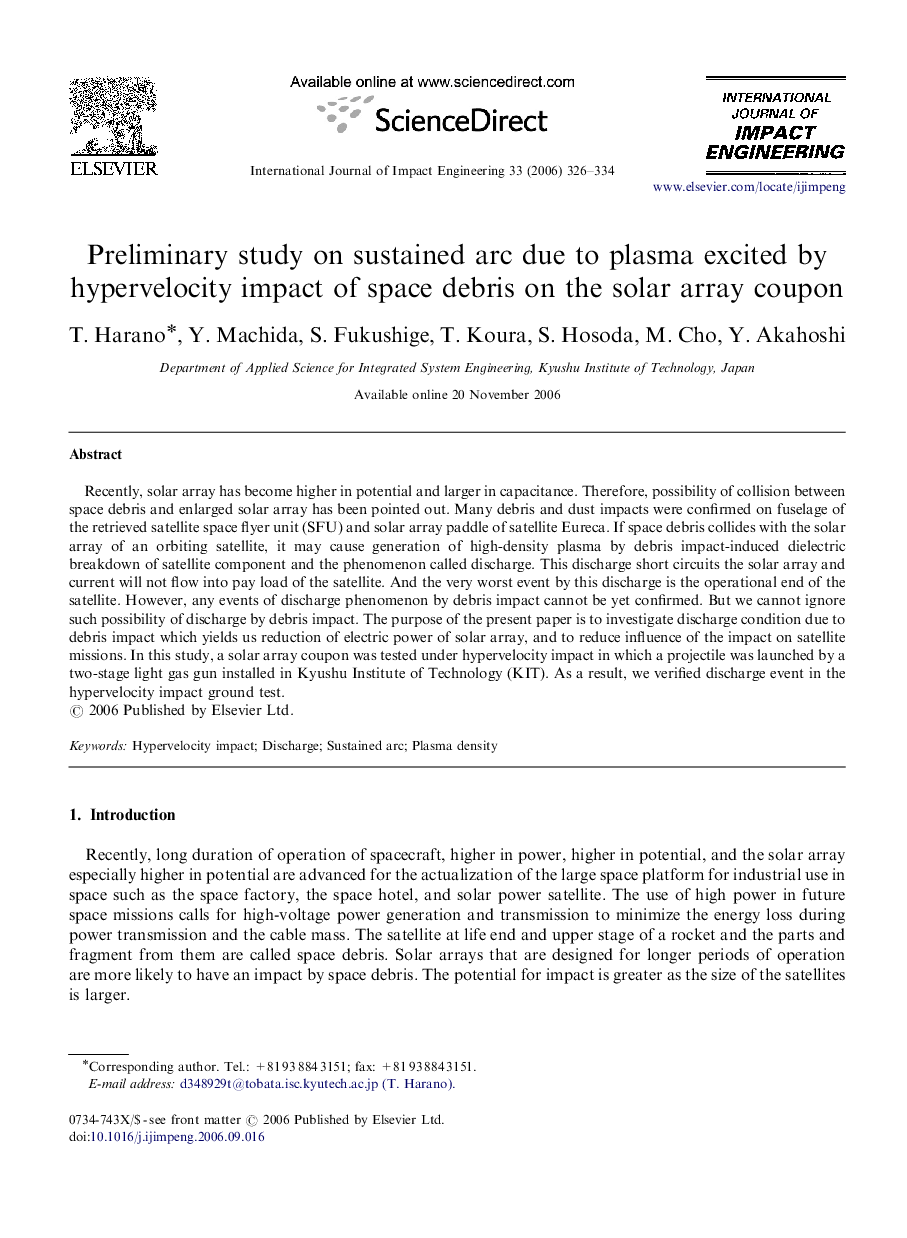| Article ID | Journal | Published Year | Pages | File Type |
|---|---|---|---|---|
| 779604 | International Journal of Impact Engineering | 2006 | 9 Pages |
Recently, solar array has become higher in potential and larger in capacitance. Therefore, possibility of collision between space debris and enlarged solar array has been pointed out. Many debris and dust impacts were confirmed on fuselage of the retrieved satellite space flyer unit (SFU) and solar array paddle of satellite Eureca. If space debris collides with the solar array of an orbiting satellite, it may cause generation of high-density plasma by debris impact-induced dielectric breakdown of satellite component and the phenomenon called discharge. This discharge short circuits the solar array and current will not flow into pay load of the satellite. And the very worst event by this discharge is the operational end of the satellite. However, any events of discharge phenomenon by debris impact cannot be yet confirmed. But we cannot ignore such possibility of discharge by debris impact. The purpose of the present paper is to investigate discharge condition due to debris impact which yields us reduction of electric power of solar array, and to reduce influence of the impact on satellite missions. In this study, a solar array coupon was tested under hypervelocity impact in which a projectile was launched by a two-stage light gas gun installed in Kyushu Institute of Technology (KIT). As a result, we verified discharge event in the hypervelocity impact ground test.
